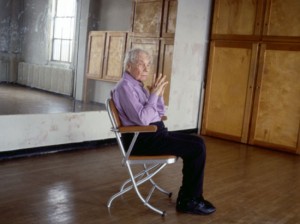Ich verstehe nur Bahnhof
I’m in Berlin till the end of August, as part of the Takt artists residency.
I learned that the German idiom Ich verstehe nur Bahnhof which means I didn’t understand anything except for the word Bahnhof, (train station) amounts to the English idiom It’s all Greek to me. There are certainly many days when pretty much the only German word I understand all day is Bahnhof.
Hamburger (…er) Bahnhof, former train station and now major contemporary art museum, was such a pleasure to see. Something happens to me when I go out to see art in places like this in Berlin, and I have to be careful because I am easily swept up in the musuemy glitz of it all, but I get a good feeling. It’s a feeling that completely goes against my more suspicious media literacy instincts. I sometimes get the feeling that the museum cares a lot about the work they’re showing, and that the artist deserves such resplendent spaces to let the work shine. I get a feeling that the work is a precious thing, and not in a negative way. I feel like an art rock star fan, and it feels good to feel this way.

Zarina Bhimji Waiting 2007 still. From film installation in "Who knows tomorrow" at Hamburger Bahnhof, Berlin
But… as I saw more of the Friedrich Christian Flick Collection, even though I was pleasantly overwhelmed to see so many famous contemporary works presented together, many pieces I’ve only seen in books, I was a little miffed to see so few women artists. This collection, (even though this was only some of it, its being presented over 6 years) seemed limited in social and cultural scope. I also learned more about the Friedrich Christian Flick Collection and the controversy surrounding it. His grandfather Friedrich Flick’s steel company was a major weapons supplier to the Nazi Regime. This article by interesting blogger Ivar Hagendoorn covers the first show of his collection at Hamburger Banhof, in 2004, and goes into the controversy a little more . Honestly, as a baby to Berlin and German cultural understanding, all I can think is, at least the money used for evil is now being used for good. What a simplistic thought. Ich verstehe nur bahnhof.
My disappointment at the scope of Flick’s collection was healed a bit by the Who knows tomorrow piece Waiting, by Ugandan artist Zarina Bhimji. The work is a very large projection of 35mm film representing the workings of a sisal factory in Kenya. The piercing beauty of the images illuminate the inhumane history of the industry. Who knows tomorrow is a Berlin citywide exhibition of African artists taking place this summer. Below is from the WKT website.
“At the exhibition Who knows tomorrow, Zarina Bhimji presents her film installation Waiting (2007), for which she studied the facts of this portion of colonial history at length. Although invisible in her film, it still accompanies it like a melodic theme. Zarina Bhimji visited sisal-processing factories near Mombassa, Kenya, some of which originate from colonial times. The beauty of the architecture, the bright, hot light and the simultaneously quasi-paralyzing atmosphere together with the minute movements and the sensitive details of the colors, the walls and the utensils focus the viewer’s gaze on the beauty of the material. Introduced by the Germans to the German colonies in East Africa in the 1890s and still grown on the plantations today, the material is used for ropes, cords, sacks, and carpets.The beauty of the sisal’s texture conjures up memories of hair, lending life to the material that takes on an abstract quality. The artist’s pictures and her sounds address the viewer in a highly emotional manner. The power of Zarina Bhimji’s works is based on their sensuous and seductive imagery, inseparably tied to the tragic and melancholic sadness and burdened by history.”





